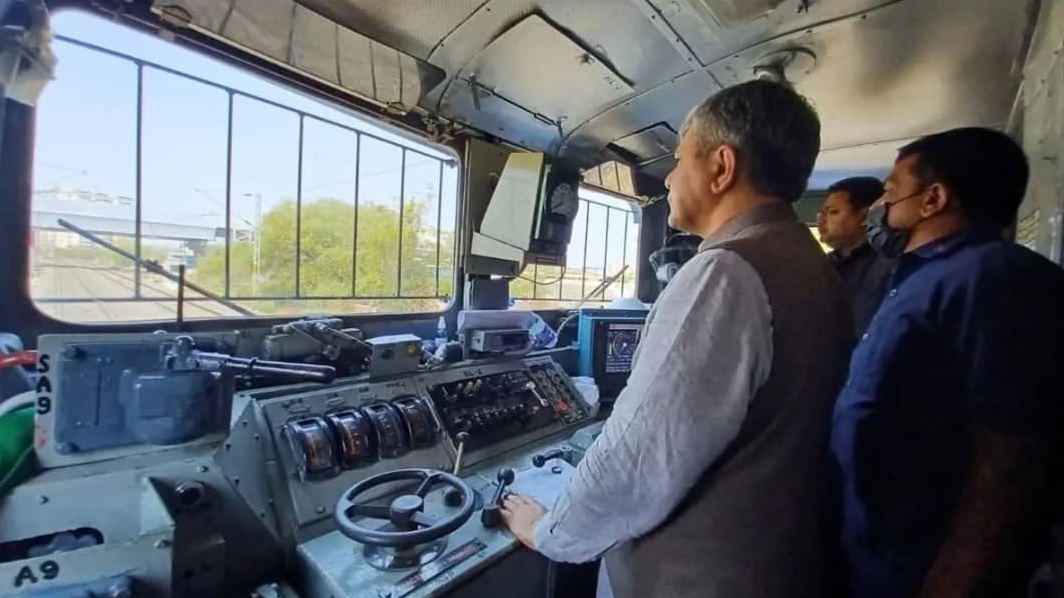India & World UpdatesHappeningsBreaking News
India successfully tests indigenously developed ‘Kavach’, an automatic head-on collision system

March 5: There were many such incidents in the past where two trains in the same track resulted in head-on collision thereby claiming the lives of many. To avoid such mishap, Indian Government has now come up with an indigenously developed anti-collision system ‘Kavach.’ It’s an Made-in-India initiative in development since 2012, under the name Train Collision Avoidance System.
 Being promoted as the world’s cheapest automatic train collision protection system, it is a set of electronic devices installed in locomotives as well as the tracks to bring a train to halt automatically if it notices another train on the same track within a prescribed distance. The indigenously developed Kavach system costs Rs 40-50 lakh for each kilometre while European models cost approximately Rs 1.5-2 crore for each kilometre.
Being promoted as the world’s cheapest automatic train collision protection system, it is a set of electronic devices installed in locomotives as well as the tracks to bring a train to halt automatically if it notices another train on the same track within a prescribed distance. The indigenously developed Kavach system costs Rs 40-50 lakh for each kilometre while European models cost approximately Rs 1.5-2 crore for each kilometre.
भारत में बना – भारत का कवच।#BharatKaKavach pic.twitter.com/gGQRfFKNCM
— Ashwini Vaishnaw (@AshwiniVaishnaw) March 4, 2022
Indian Railways Friday carried out a trial of indigenously developed Automatic Train Protection System – Kavach. In a tweet after the trials, railway minister Ashwini Vaishnaw said that this is a landmark of ‘Aatmanibhar Bharat’ with the successful test of a head-on collision being averted. “Future plan is to roll it out very rapidly and export it to other countries also. This year we will roll it out on 2,000 Kms and in coming years 4,000-5,000 Kms every year,” Vaishnaw said.
 Vaishnaw, who travelled in a locomotive and inspected the working of ‘Kavach’, including an on-site demonstration of a head-on collision, said it is a significant milestone in the history of Indian Railways. The highlight of the demonstration was the avoidance of the head-on collision by ‘Kavach’ without manual intervention.
Vaishnaw, who travelled in a locomotive and inspected the working of ‘Kavach’, including an on-site demonstration of a head-on collision, said it is a significant milestone in the history of Indian Railways. The highlight of the demonstration was the avoidance of the head-on collision by ‘Kavach’ without manual intervention.
 This was demonstrated between Gullaguda, Chitgidda railway stations on Lingampalli, Vikarabad section of Secunderabad Division in South Central Railway (SCR), with Vaishnaw travelling in a locomotive in one direction, while Vinay Kumar Tripathi, Chairman and CEO, Railway Board was travelling in another on the opposite direction on the same track and ‘Kavach’ worked as desired to stop the trains and avert a collision.
This was demonstrated between Gullaguda, Chitgidda railway stations on Lingampalli, Vikarabad section of Secunderabad Division in South Central Railway (SCR), with Vaishnaw travelling in a locomotive in one direction, while Vinay Kumar Tripathi, Chairman and CEO, Railway Board was travelling in another on the opposite direction on the same track and ‘Kavach’ worked as desired to stop the trains and avert a collision.
आत्मनिर्भर भारत की मिसाल- भारत में बनी 'कवच' टेक्नोलॉजी।
Successfully tested head-on collision. #BharatKaKavach pic.twitter.com/w66hMw4d5u— Ashwini Vaishnaw (@AshwiniVaishnaw) March 4, 2022
Once the system is activated, all trains within a 5-km range will halt to provide protection for trains on adjacent tracks. Currently, loco-pilots or assistant loco-pilots usually crane their necks out of the window to look for caution signs and signals, said officials.





